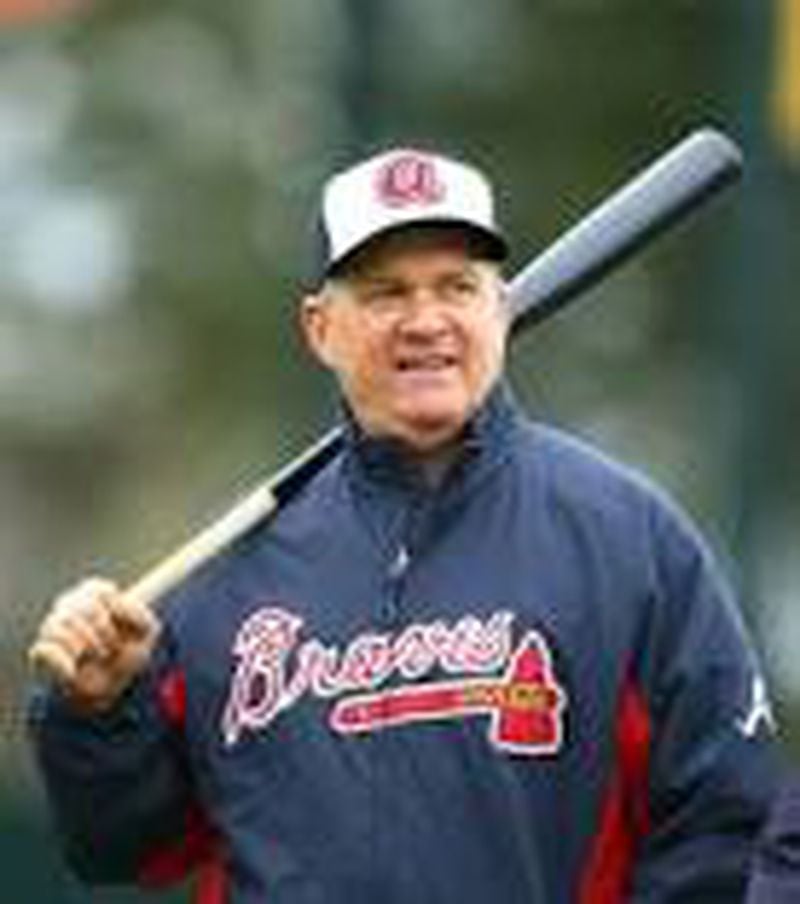Freddie Freeman, the Braves’ scorching-hot-hitting first baseman, is a modest sort who doesn’t like to talk much about his exploits and prefers to portray an “I just see the ball and hit it” sort of philosophy, even if teammates and coaches know he is much more technical than that. He works as hard as anyone in the batting cage and is notoriously hard on himself when he doesn’t feel like his swing is where it needs to be at any given time.
So on Wednesday afternoon, while Freeman’s group was taking batting practice at SunTrust Park and hitting coach Kevin Seitzer was standing on a step behind the netting of the batting cage, watching intently, I asked Seitzer about working with Freeman since Seitzer came to the Braves after the 2014 season, following one season as hitting coach for the power-hitting Blue Jays, who finished second in the American League in OPS when he was there, and four seasons with a youthful Royals team including Alex Gordon, who credited Seitzer with successfully overhauling his swing.
There was no overhauling of Freeman’s swing when Seitzer arrived. A two-time All-Star and .295 career hitter in 12 major league seasons, Seitzer led the American League in hits as a rookie with 207 in 1987, when he had Royals icon George Brett as a mentor late in Brett’s Hall of Fame career. Seitzer, who played multiple seasons with the Royals, Brewers and Indians, considers Brett and Paul Molitor as the best pure hitters he ever played with.
But wait till you see some of the praise Seitzer has for Braves slugger Freeman, who has been arguably baseball’s best hitter since mid-June. In 110 games dating to June 13, Freeman has hit .350 (143-for-409) with 73 extra-base hits including 30 home runs, a .448 on-base percentage and .689 slugging percentage, for a 1.137 OPS. Those are absurd numbers, folks. MVP numbers if he maintains anything close to that.
After his two-homer, two-double night Monday against the Padres, Freeman was 2-for-2 with two singles and two walks Tuesday against the Nationals. Extending his streak of reaching base successfully to 10 plate appearances, one shy of an Atlanta Braves record set by Jeff Burroughs in 1978.
“A couple of days ago I was fouling off a lot of pitches,” Freeman said with a shrug. “I can’t tell you anything that’s happened; I’m hitting balls and they’re going through.”
Seitzer knows better.
Here’s what he had to say when I asked him about working with Freeman and whether Freeman reminded him of any other hitters he’d been around.
“Honestly it took a year and a half to figure out what buttons to push with him in order to keep him out of his long (cold) stretches,” Seitzer began. “I don’t even like to talk about it because he may go into a long stretch and those buttons -- I might have to find news ones. But he’s been really, really disciplined to make the adjustments he needs to make in order to have a chance to do some serious damage in the games. But when he gets out of whack he can’t catch up to fastballs, he’s swinging at bad pitches, and we’ve seen a few stretches of that this season where the buttons have brought him back.
“When I first came here and we started having our initial conversations I said, what do you do when you get in trouble? What adjustments do you make? He goes, ‘None, I just keep swinging until it goes away.’ And I said, well, we’ve got to find out what we can do sooner instead of having to wait until it goes away, because it could take a while to go away. He goes, ‘I know.’
“He’s just a – and George Brett was like this – just a very natural, God-given hitter that … they just did it. And they didn’t know what they did, they just did it. And so when you work with guys who haven’t ever thought about mechanics, the one thing he told me when I first got here, he goes, ‘I want to hit .300 and I’m going to try to take my base hits the other way’ (to the opposite field), and he goes, ‘and if you try to make me pull the ball because I’ve got power, we’re going to have problems.’ And I go, well you don’t have to worry about me. I like staying in the middle of the field, being aggressive that way, and if that’s your approach, with as quick a hands as you have, I said, you’re going to be in good shape.
“Helping him find adjustments was a long process. Because, as with any hitter, you can’t talk through reasoning of what’s going on with their swing and their brain, but if they don’t get quote-unquote immediate results, then they discard it. Even if it’s right, makes sense, they understand it, they agree with it, if they don’t get results they’re going to go look for something else and you’ve got to help them find something else. Freddie’s just been, since last June, we found some buttons and it’s been pretty cool. And we found a couple more this spring that helped him. Because he was just on fire in the second half last year, but it was like, I held my breath all the time because I don’t want it to go away. Because when it starts to go away, then we’ve got to get it back.”
Then I asked Seitzer a little more about Brett, since he’d mentioned the great Royals hitter.
“George, Paul Molitor – unbelievable. And Paulie (Molitor) had an unorthodox swing – no load, very still and very quick hands, explosive. He was more about pitch selection and being aggressive in a spot. Robin Yount was unbelievable, too. He wasn’t as gifted as a hitter; I mean, he was a well-rounded athlete/baseball player, great hitter too, but not like George and Molitor were. Freddie’s as good as anybody I’ve ever worked with. I won’t say he’s low-maintenance, but when he’s on fire he’s no-maintenance. And the key is just keeping him right where he needs to be, because he can get frustrated really fast, just with flips (underhand tosses in batting cage) and batting practice, if he doesn’t feel his swing working the way he wants he gets really, really mad.
“Trying to help him deal with that frustration and channel it to an adjustment has been challenging at times. But I think the relationship that we build over the last two years and the trust that’s been established, it’s been a lot, lot better. It’s been a lot smoother. Not that it was ever hard, you just want guys to be able to make those adjustments pretty quick.”



/cloudfront-us-east-1.images.arcpublishing.com/ajc/P7DYBH6TO7FEKG4SUXQQKADRXE.jpg)



